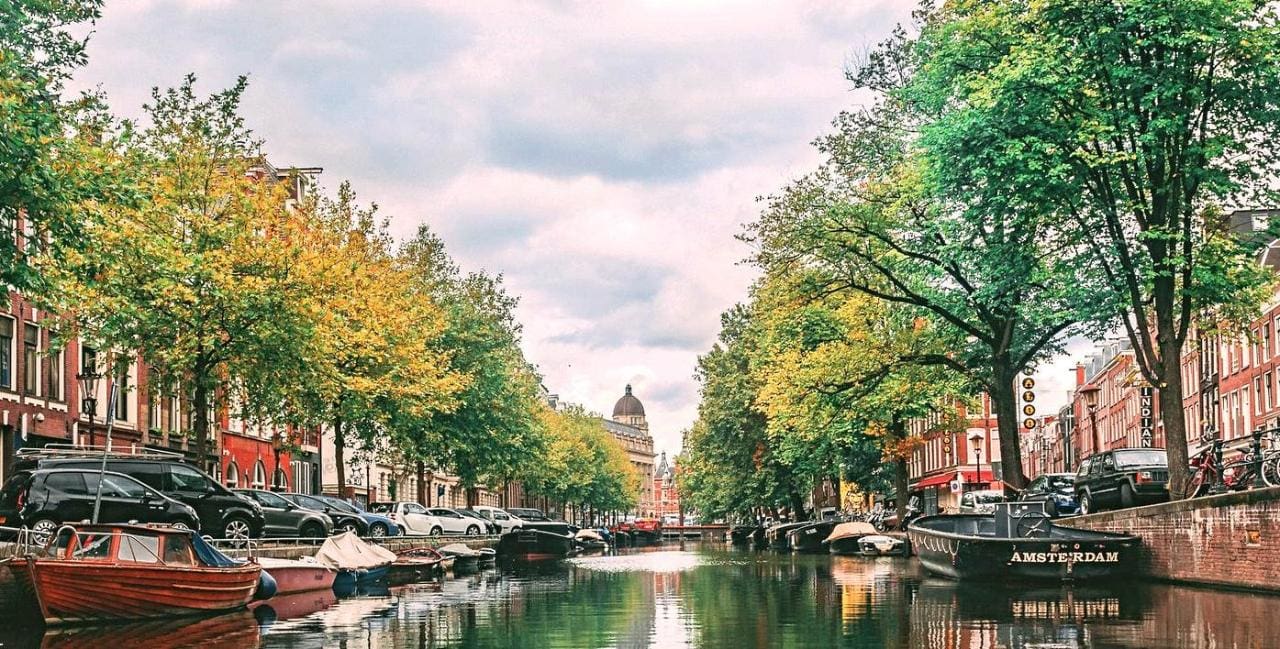The Alderwoman of Amsterdam, Sharon Dijksma, is advancing the city’s Clean Air Action Plan towards a ban of all fossil burning vehicles by 2030. Current transport-related air pollution in the city is the equivalent of smoking 6 cigarettes per day, reducing average life expectancy by 3 months. The auto industry lobby is up in arms, calling the plan “bizzare, beyond all reality.” The city council will debate the measures from the end of May, with a final decision by the summer.

“We want cleaner air for all Amsterdam residents. Dirty air is still too often a silent killer. … Amsterdammers live an average of one year shorter due to dirty air. We will do everything we can to improve that situation,” Sharon Dijksma said.
The mortality figures are based on Dutch health service (GGD) estimates. Amsterdam’s local traffic pollution is responsible for 25% of air pollution in the city, and is thus held to be responsible for approximately 3 months of early mortality. Another 25% is from local industry and aviation, and the remaining 50% is air pollution coming from neighboring countries (not least the nearby industrial regions of Germany).
Whilst particulate matter has gradually reduced over the past 10 years, NOx emissions have increased. The public health service has sounded the alarm on the city’s pollution, advising the government to take action.
Phases of the Ban
The Amsterdam ban will gradually phase in over the next decade, expanding outwards from the city’s central core to include all areas inside the A10 ring road and then spreading further, whilst gradually incorporating more vehicle types. It will ultimately include canal boats and other watercraft, as well as all road vehicles.
From 2020, any diesel older than Euro 4 (~15 years and older) will be excluded from the zone inside the A10 ring road (indicated in yellow on the below map).
From 2022, all public buses and coaches operating in the inner city center (indicated in blue) must be emissions-free, and any other vehicle entering this central area must be at least Euro 6 compliant (~2015 or newer).
From 2025, the emissions-free zone will expand to the A10 ring road, and encompass more vehicle classes, including trucks and delivery vans, taxis, and some moped types. Also restricted to zero emissions will be pleasure craft and public transport ferries.
By 2030, all vehicles that are not emissions-free will be excluded from all built-up areas of the city (indicated in green), including all private cars and 2-wheelers.

More EV charging points will be set up to encourage the transition, with owners of EVs able to request new charge points to be installed in their locale if they are not already present. Some purchase incentives are also proposed to help residents switch to zero emissions vehicles, though the exact details of these are not yet clear.
The plans will be discussed though June and July, with consultations from residents and businesses. According to the Dutch NGO Environmental Defense (Milieudefensie), there is already plenty of public support:
“A very nice plan and profit for the lungs of all Amsterdammers … 66 percent of Amsterdammers only want emission-free traffic in the city center, so there is a lot of support for this plan,” (translation) Anne Knol of Milieudefensie said.
Auto Lobby Pushes Back with Misinformation
As might be expected given the now infamous reluctance of legacy automakers to transition their offerings away from fossil-burning vehicles, one of the industry’s main proponents, the Dutch RAI Association, has come out strongly against Amsterdam’s plans:
“A bizarre plan, beyond all reality and unfeasible… Many tens of thousands of families who have no money for an electric car will soon be left out in the cold. That makes Amsterdam a city of the rich. In 2030, about one-third of the cars will be electric, we expect. But there will also be a lot of people who won’t be able to afford that by then.” (translation)
Of course, what they don’t mention is that there will be a huge number of affordable used EVs on the Dutch market by 2030, which will offer much better overall value than fossil vehicles, especially to those on a tight budget.
With added EV incentives from the Amsterdam government, the transition to an EV will be an easy and obvious choice. Despite the RAI’s desperate claims, it is far more likely that most folks on a tight budget will have already made the transition away from expensive fossil fuel burners well before 2030, precisely to save themselves from wasting money.
What the industry is really fearful of is any hastening of the (now inevitable) decline in their traditional cash-cow fossil vehicle sales. With such bans of fossil vehicles looming, sensible folks are already steering away from the old and polluting technology. If the industry was really concerned about helping out “Many tens of thousands of families who have no money,” they would have been sincerely pursuing the production of EVs over the past two decades, instead of attempting to bury the technology after smothering it back in the 1990s.
We’ll keep tabs on how Amsterdam’s planned zero-emission transition progresses. Please share your thoughts in the comments.
Source: CleanTechnica








